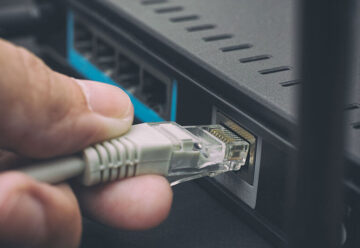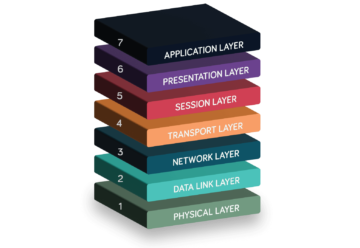Business data demands have evolved significantly in recent years. Data centres continue to be built to support the data driven economy and migration to the cloud, and new digital use cases and advanced technologies are impelling digital transformation. At the heart of this is the underlying communications infrastructure that enables the deployment of applications and services that can enhance productivity, efficiency, and business operations. One such solution that supports the ambitions of data hungry organisations is Optical connectivity.
In this blog, Mark Charlesworth, Product Director at Neos Networks and Richard Horton, Account Manager at Ciena, discuss the ins and outs of Optical connectivity and the benefits it can bring to businesses across all industries.
What is Optical networking and how has it revolutionised connectivity solutions for businesses?
Richard: Optical networking is a means of communication and data transmission that starts at the very bottom of the Open Systems Interconnect (OSI) model with the multiplexing of waves and transmission of information encoded in light signals. Without going too far into the technical details, what this means in terms of real, noticeable benefit is that the network technology is capable of transporting large amounts of data. Optical can deliver connectivity services that are exclusive and deterministic, while offering the lowest possible latency of any type of network. It also provides a much better cost point for the bandwidth received for organisations with large data demands – for example those businesses with large data lakes or data centres and cloud infrastructure that they need to stitch together. Ultimately, it is the least complex and most cost-effective way of achieving the transport needed to move vast amounts of data and it removes a lot of the complexities that are experienced further up the OSI model.
Mark: From the perspective of a network provider, Optical Wavelength networking is focused on alleviating the traffic pressure from Ethernet and IP networks. This allows our customers consuming the service to achieve better efficiencies and economies of scale, subsequently receiving better service options and availability. Optical transport has also revolutionised the service provider’s solutions offerings, to meet the demands of those customers and vertical industries that require increasing amounts of data consumption, with a service they can rely on, whatever their industry.
The reason why Optical is so critical for customers who consume high capacities is because Ethernet simply cannot efficiently handle the transport of huge quantities of data, or the types of data demands we see from sectors like media and finance. Equally, what Optical has given our customers is complete control on quality, on processing, and also greater transparency of service. In its purest sense, Optical has advanced large-scale transportation and is the ideal solution for multi-site enterprises with significant data demands vs more simplistic, small-scale business that can be handled over a computing platform.
Get ultrafast, low latency Optical Wavelengths
Supercharge your network up to 400Gbps
What specific business and industry challenges does Optical connectivity help to solve?
Mark: Optical is fundamental in enabling any business that requires network transparency and transportation, but also high capacity. Some of the industries that immediately spring to mind are finance, media and broadcast. These types of organisations carry vast quantities of data between data centre sites and often across international borders. The use cases could include high frequency real time trading or sharing large broadcast quality multimedia content almost instantaneously without the need for file compression. Optical networks are also critical in solving challenges for data centre providers, system integrators and wholesale carriers that have vast networks to connect and don’t want, or cannot operate with, an army of Ethernet connections between their sites. Critically, Optical gives those high data demand industries the fluidity of data exchange between one system and another. Employers and employees alike don’t want to be overly concerned with the technicality of compressing files and data to ease their transmission, they simply want to focus on the objectives of their business.
Richard: Mark is right to highlight those uses and another industry I would call out is healthcare. When we speak to customers in the healthcare sector, they’re often sending high-quality, high-density images, scans and files, data sets that can be difficult to compress. Not only that, but healthcare professionals must work quickly, sharing those high-density files in raw format, and in real time, creating some astonishingly high bandwidth demands, another challenge Optical communications solve.
Additionally, Optical is inherently more secure. If you’re running an Optical circuit, you aren’t going up in OSI layers, so with an exclusive dedicated circuit there is no control plane or any other protocol that could be interrogated by bad actors. What’s more, the entire pipe can be encrypted, securing the data at the lowest possible layer to ensure robust communication and smooth transport of data. The final thing I’d add is that we see some enterprises making use of Optical to hedge their cloud application use and run multiple workloads with various cloud providers. We’re starting to see more enterprises adopt this hybrid-cloud model, buying resources at different times based on the economic benefits it creates. This might involve moving different workloads at different times of the day from one provider to another. In doing so they need that Optical layer to move those workloads at scale and in real time, for that added flexibility and agility in managing their cloud environments.
Why should businesses choose an Optical solution over other connectivity solutions such as Ethernet?
Mark: There are three key considerations for why a business should choose Optical: price, capacity and transparency. Of course, a business can buy an Ethernet service at a lower cost to a 400Gbps Optical service; however, if you are in the market for high scale, high availability data then you simply can’t compare an Ethernet connection with the capabilities of an Optical network to meet your capacity and bandwidth demands. Critical National Infrastructure is an area where Optical is fundamental in supporting an always-on operation, to consistently monitor and manage high levels of network traffic.
Richard: Additionally, businesses that need robust protection mechanisms in their network should certainly consider an Optical solution. The further up the OSI stack you go, the more difficult it is to achieve the switch over performance of close to 50ms – in fact, it’s impossible to achieve that with Ethernet. Some businesses might look at the opportunities with Dark Fibre, but those businesses must consider that they will then have the responsibility of lighting their own Optical systems and the complexities that come with it. Consuming Optical products is very simple however, building Optical networks is not nearly as straightforward.
What Optical connectivity solutions are available to businesses and how do they use them?
Richard: Optical connectivity solutions range from point-to-point, relatively low bandwidth connections like 10Gbps all the way up to large switched optical networks of 400-800Gbps using Optical Transport Networking (OTN) and virtual private networks where you may even build a virtual Optical network core.
Mark: Demand is highest for the point-to-point connections, everything from 10Gbps up to 100-200Gbps services. The important thing to remember though is that you don’t buy Optical networks off the shelf. They are dynamic and flexible solutions that are tailored to meet specific and unique business needs. The solution will always be designed with careful consideration of what the customer will use the network for, and the level of service they want. Deploying an Optical solution fulfils a lot more than just providing internet access, with X amount of bandwidth. There are elements such as short-haul and long-haul considerations. Optical solutions aren’t just about meeting capacity demands, they also solve challenges with distance and interconnects – particularly in the data centre market. Data centres need a long shelf-life. They involve much longer planned investment and deployment meaning the Optical solution must fit current and future requirements with the option to scale as the business and its customer base grows.
How are Optical connectivity solutions unlocking the potential of advanced network technologies like 5G, IoT and edge networking?
Mark: The IoT opportunity is an interesting one when considering the potential benefits of supporting a connected ecosystem with Optical. IoT has always been seen as large amounts of small packet data and information, with a mandatory requirement for that data to be shared constantly in real time. As the number of IoT devices proliferates, there will be this enormous build-up of data that will need to be transported from multiple point A’s to multiple point B’s, and that represents a very different challenge to moving, for example, that large high-density data in a healthcare organisation that we discussed earlier. Finding a dedicated way to transport that information creates a challenge that wasn’t around before, and it’s a challenge that Optical technology can solve.
Richard: Another technology that Optical can enable is the machine-to-machine infrastructure on the back end of the network. Currently this involves lots of small communications, but much like IoT, as that scales it becomes significant and the more applications running means significantly more data that needs to be transmitted between data centres and end points. As Optical has evolved, there has been an inevitable driving down of the cost and where those data centre environments were previously centralised, more and more compute is now being pushed out to the edge to enable more real time processing, analysis, and communication of data. Underpinning all of that is a solid Optical backbone.
The industry has of course talked at great lengths about the potential for 5G, and Optical is undeniably critical in supporting the mobile network with reliable backhaul infrastructure. With 5G, the access technologies and the Radio Access Network (RAN) changes. A variety of RAN technologies, whether that’s virtual RAN or Open RAN, create significantly different service requirements. Optical makes a real difference in enabling the convergence of the fronthaul, backhaul and midhaul transport within the mobile network, leading to the concept of the xhaul infrastructure changes that come with the advent of 5G. Again, due to the decrease in the cost of Optical networks that has occurred over time, there is more flexibility for these technologies to become more distributed, changing the economies of the network for the mobile operators, and that is supported by the flexibility and agility of the Optical infrastructure.
Get ultrafast, low latency Optical Wavelengths
Supercharge your network up to 400Gbps







